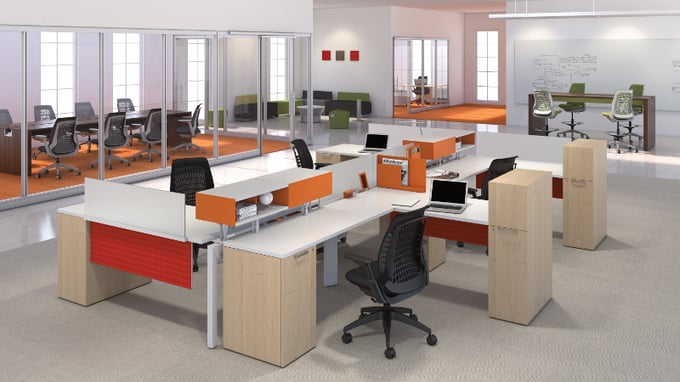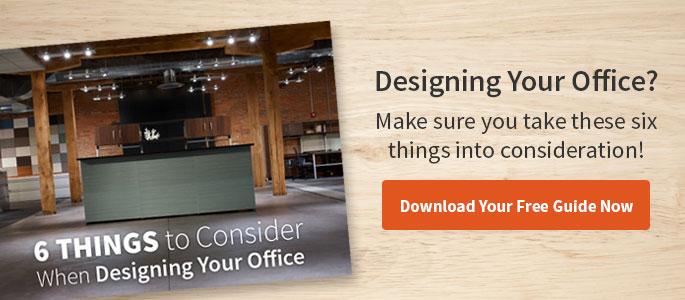We’ve all had a job where we dreaded going into work every morning: the four-walled cubicle in the basement of a corporate building or the half-decorated, outdated office that smells like mothballs and accumulated dust. These poorly designed workplaces are not only unappealing; they negatively impact employee productivity. A recent study showed that programmers in a higher quality workplace performed better than programmers in a poor work environment.
When you’re redesigning an existing office space or designing a new office, consider how your design choices can improve employee satisfaction and, therefore, productivity. To help you design an office suited to your company’s and employee's unique requirements, we’ve outlined tips for creating an ideal work environment.

1. Let go of what an office “should be”
When designing your office space, think outside of the box. Leave behind all of your previous assumptions about what an office space should look like, from the conference room to the company break room. If you want your products or services to be innovative, why not design an innovative office space that leaves behind outdated concepts?
Accommodate the diverse learning styles and preferences of various employees. Design open, collaborative areas where employees can bounce ideas off one another. Incorporate quiet, private areas where introverted employees can focus on tasks and remove themselves from the hubbub of the main work areas. You can’t please everyone, but you can certainly help as many employees as possible feel comfortable in the workplace.
2. Increase exposure to natural light
Natural light uplifts your employees’ moods and enhances productivity along with numerous other health benefits. Never underestimate the benefits of natural light in your office. Make sure your office features ample windows to ensure employees have a view of the outside world.
3. Provide multiple communal areas
Include a communal area where employees can relax and socialize. Depending on the size of your company, your office may require multiple communal areas to ensure your employees have somewhere to refuel and recharge throughout the work day. Encourage your employees to visit these rooms by creating welcoming, positive environments. Include comfortable seating, a coffee station, snacks, and even group games so employees can connect and take a much-needed break.
4. Create an aesthetically-pleasing design
No employee wants to stare at a monochromatic color scheme or headache-inducing fluorescent lights. Choose a wall color that stimulates productivity and invest in creative, unique office decor. Instead of inspirational posters and token office wall art, search for one-of-a-kind art pieces at thrift stores, antique shops, and flea markets. We’re not saying you need an indoor slide like Google, but imaginative design choices can transform a humdrum workplace into a hive of activity.
5. But keep it simple
Keep clutter to an absolute minimum. The décor, though trendy and fun, shouldn’t be overdone. If decorations fill every inch of space, your employees may feel overwhelmed. Make sure the office is cleaned – dusted, vacuumed, swept – at least once a week, depending on the number of employees and size of the office. Encourage employees to also clean up their personal space at the end of the day. A clean, organized work environment will ensure employees remain happy and content.
A well-designed work environment can boost employee morale and productivity. Even small tweaks to your office design can lead to happier, more successful employees.



